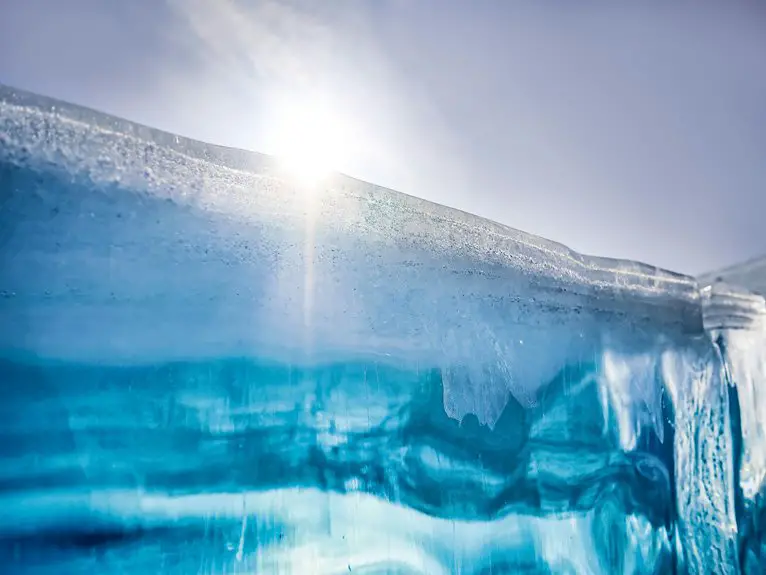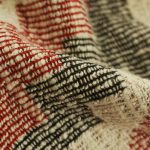When you’re gearing up for cold weather activities like skiing or hiking, choosing the right moisture-wicking base layer can make all the difference. You want something that keeps sweat off your skin without losing warmth, but not all materials perform equally. Understanding how natural fibers like merino wool compare to synthetic options can help you find the perfect fit. Let’s explore what features really matter to stay comfortable and dry out there.
Table of Contents
Key Takeaways
- Choose moisture-wicking base layers made of merino wool or synthetic fibers for effective sweat management and thermal regulation in cold weather.
- Skiing base layers should be snug, insulated, quick-drying, and feature seamless stitching to maximize warmth and comfort during high-intensity activity.
- Hiking base layers require a balance of breathability and thickness, prioritizing moisture-wicking fabrics that prevent overheating and allow freedom of movement.
- Layer moisture-wicking base layers under mid and outer layers to maintain dryness, warmth, and protection against wind and moisture.
- Opt for reputable brands like Patagonia, Smartwool, and Icebreaker that offer durable, sustainable, and high-performance moisture-wicking base layers.
Benefits of Moisture-Wicking Base Layers in Cold Weather
Although you mightn’t notice it right away, moisture-wicking base layers play an essential role in keeping you warm during cold weather.
When you sweat, moisture retention in your clothing can quickly make you feel cold and uncomfortable. These base layers actively pull sweat away from your skin, helping to maintain dryness. This process supports effective thermal regulation by preventing wetness from cooling your body down.
By managing moisture, moisture-wicking fabrics reduce the risk of chills and hypothermia, especially during outdoor activities. When you wear them, you’ll stay warmer and more comfortable, even as you exert yourself.
Comparing Natural and Synthetic Base Layer Materials
Understanding how moisture-wicking base layers keep you warm is just the start; choosing the right material makes all the difference in performance and comfort.
Natural fibers like merino wool offer excellent breathability and odor resistance, keeping you comfortable during extended wear. They regulate temperature well but can be pricier and require more care.
Merino wool provides superior breathability and odor resistance, ensuring comfort even during long periods of wear.
On the other hand, synthetic fibers such as polyester and nylon excel at quick drying and durability, making them ideal if you expect heavy sweating or need easy maintenance.
Synthetic options often dry faster but may retain odors more than natural fibers.
When deciding, consider your activity level, weather conditions, and personal preferences.
Both materials have strengths, so picking the base layer that fits your needs guarantees you stay warm, dry, and comfortable all day long.
Key Features to Look for in Skiing Base Layers
Choosing the right skiing base layer means focusing on features that keep you warm, dry, and comfortable on the slopes.
Look for advanced fabric technology that efficiently wicks moisture away from your skin, preventing chills caused by sweat buildup. Materials with strong insulation properties help trap body heat without adding bulk, ensuring you stay cozy in cold conditions.
A snug fit is essential to maximize these benefits, as it promotes better moisture transfer and warmth retention. Additionally, consider base layers with quick-drying capabilities and breathability to regulate temperature during intense activity.
Seamless or flatlock stitching reduces irritation, enhancing comfort during long ski days. By prioritizing these key features, you’ll enjoy peak performance and protection against harsh weather while skiing.
How to Choose the Right Base Layer for Hiking
When you head out for a hike, picking the right base layer can make all the difference in comfort and performance. Focus on finding a balance between layer thickness and fabric breathability to keep you dry and comfortable. A thinner layer works well for high-intensity hikes, while thicker options provide extra insulation for colder conditions.
Prioritize materials that wick moisture efficiently and allow your skin to breathe.
Here’s what to take into account when choosing your hiking base layer:
- Choose fabric with high breathability to prevent overheating.
- Select layer thickness based on temperature and activity level.
- Opt for materials like merino wool or synthetic blends for moisture management.
- Guarantee a snug fit to trap heat without restricting movement.
This approach keeps you comfortable on every trail.
Layering Techniques to Maximize Warmth and Comfort
You’ll want to start with a moisture-wicking base layer that keeps sweat off your skin.
Next, add a mid layer that traps heat without restricting movement.
Finally, top it off with an outer layer that blocks wind and moisture to stay warm and dry.
Base Layer Importance
Although many outdoor enthusiasts focus on outerwear, your base layer plays an essential role in keeping you warm and comfortable.
Base layer technology is designed to wick moisture away from your skin, preventing chills and guaranteeing consistent temperature regulation. Choosing the right base layer means your body stays dry and warm, even during intense activities.
To maximize the benefits of your base layer, remember to:
- Select fabrics with excellent moisture-wicking properties like merino wool or synthetic blends
- Maintain a snug fit to trap heat without restricting movement
- Prioritize breathability for effective temperature regulation
- Avoid cotton, which retains moisture and chills the body
Mid Layer Functionality
Two key functions define a good mid layer: insulation and breathability.
When you choose a mid layer, you want it to provide thermal insulation to keep your body heat trapped without causing overheating. It’s essential that this layer manages moisture retention effectively, so sweat doesn’t build up, which can leave you feeling cold and clammy.
Materials like fleece or lightweight down are excellent because they balance warmth and breathability. Your mid layer works in harmony with your moisture-wicking base layer by trapping heat while allowing moisture to escape.
This guarantees you stay warm and dry during activity. By mastering mid layer functionality, you optimize your layering system for comfort and performance in cold weather without sacrificing mobility or dryness.
Outer Layer Protection
When you step into cold weather, your outer layer acts as the final shield against wind, rain, and snow. Choosing the right outer layer types and materials can make all the difference in staying warm and comfortable.
Look for jackets or shells designed to block elements while allowing breathability. Common outer layer materials include Gore-Tex, nylon, and polyester blends, which offer durability and water resistance.
Consider these tips for effective outer layer protection:
- Pick a waterproof or water-resistant shell to keep moisture out
- Opt for windproof fabrics to reduce heat loss
- Guarantee your outer layer has ventilation options to prevent overheating
- Choose lightweight but sturdy materials for mobility and protection
This final layer complements your moisture-wicking base and insulating mid layers perfectly.
Top Merino Wool Base Layers for Outdoor Activities
You’ll love how Merino wool keeps you warm, dry, and comfortable during your outdoor adventures.
Choosing the right brand can make a big difference in performance and durability.
Plus, knowing how to care for your Merino base layers will help them last through many seasons.
Merino Wool Benefits
Merino wool stands out as a top choice for base layers in cold weather because it naturally regulates your body temperature and wicks moisture away.
When you wear merino wool, you stay warm without overheating, thanks to its excellent temperature regulation. It pulls sweat from your skin, keeping you dry and comfortable during intense activities like skiing or hiking.
Plus, merino wool is soft and itch-free, so you won’t feel irritated even after hours of wear.
Here’s why merino wool base layers work so well for you:
- Effective moisture-wicking keeps sweat off your skin
- Superior temperature regulation adapts to changing conditions
- Soft, non-itchy fibers for all-day comfort
- Naturally odor-resistant, so you can wear it longer between washes
Best Merino Brands
Although many brands offer merino wool base layers, some stand out for their quality, durability, and performance in outdoor activities.
You’ll want to check out brands like Icebreaker, Smartwool, and Minus33, all known for their premium merino wool that balances warmth and breathability.
These companies prioritize sustainable sourcing, ensuring their wool is ethically harvested and environmentally friendly.
When you pick a base layer from these brands, you’re investing in gear that wicks moisture effectively while resisting odors—perfect for long days on the trail or slopes.
Their attention to detail means you get snug fits without sacrificing comfort or mobility.
Choosing a reputable brand guarantees you get the full benefits of merino wool combined with responsible production practices.
Care Tips Merino
When caring for your merino wool base layers, handling them properly guarantees they stay soft, durable, and effective at moisture-wicking. Proper merino care guarantees your garments perform well on every adventure.
Focus on gentle merino washing to preserve the fibers and avoid shrinkage or damage. Follow these tips to extend your base layers’ lifespan:
- Use cold water and a mild detergent made for wool.
- Avoid fabric softeners and bleach, which can break down fibers.
- Wash on a gentle cycle or hand wash to prevent agitation.
- Lay flat to dry instead of using a dryer to maintain shape and softness.
Best Synthetic Fabrics for Moisture Management
Choosing the right synthetic fabric can make a big difference in how well your base layer handles moisture during cold-weather activities. Synthetic fabrics excel in moisture management by quickly wicking sweat away from your skin, keeping you dry and comfortable. Their synthetic benefits include durability, quick drying, and lightweight warmth, making them ideal for skiing or hiking in cold weather.
| Fabric Type | Key Benefits |
|---|---|
| Polyester | Excellent moisture wicking |
| Nylon | Durable and abrasion-resistant |
| Polypropylene | Lightweight and water-resistant |
| Spandex | Adds stretch and comfort |
| Blends | Combines benefits for balance |
Caring for Your Moisture-Wicking Base Layers
Synthetic fabrics offer great moisture management, but their performance depends on how you care for them. To keep your moisture-wicking base layers effective, you need to use proper washing techniques and drying methods.
Proper care is key to maintaining the moisture-wicking power of synthetic base layers.
Avoid fabric softeners, as they can clog fibers and reduce breathability. Wash your base layers in cold water to prevent damage and preserve elasticity. Use a gentle cycle and a mild detergent designed for technical fabrics.
When drying, skip the high heat; instead, air dry or tumble dry on low to maintain the fabric’s integrity. Follow these tips to extend the life and performance of your base layers:
- Wash separately or with similar fabrics to avoid abrasion
- Avoid bleach or harsh chemicals
- Turn garments inside out before washing
- Store in a cool, dry place after drying
Caring right means your base layers stay comfortable and functional.
Durability and Fit Considerations for Active Use
You’ll want base layers made from strong materials that hold up through repeated use and washing.
Choosing the right fit guarantees you can move freely without extra bulk or restriction.
Pay attention to seam construction, as well-crafted seams boost comfort and reduce irritation during active wear.
Material Strength and Longevity
Many moisture-wicking base layers can lose their effectiveness if the material weakens or the fit changes over time.
To guarantee fabric resilience and long lasting performance, you need to focus on quality materials and proper care. Look for base layers made from high-density synthetic fibers or merino wool, as they maintain strength through repeated use and washing. Avoid cheap blends that pill or stretch out quickly.
Keep these tips in mind for durability:
- Choose tightly knit fabrics for better resistance to wear
- Follow washing instructions closely to preserve elasticity
- Avoid fabric softeners that degrade moisture-wicking properties
- Inspect seams and stitching regularly for early signs of damage
Fit Types and Mobility
Although durability is essential, the fit of your base layer plays an equally important role in ensuring both comfort and freedom of movement during cold-weather activities.
When choosing fit types, you’ll typically find options ranging from snug compression fits to relaxed cuts. A compression fit offers excellent moisture-wicking and warmth but might restrict mobility if it’s too tight.
Relaxed fit types provide more room, enhancing your mobility options without feeling constrictive, ideal for layering or dynamic activities like skiing or hiking.
You’ll want to select a base layer that balances fit with flexibility, allowing you to move naturally while maintaining thermal efficiency.
Keep in mind that the right fit supports performance and comfort, so test different types to find what suits your activity and body best.
Seam Construction and Comfort
Choosing the right fit is just one part of ensuring comfort and durability in your base layers. Seam construction plays an essential role in how your gear performs during active use.
Different seam types impact comfort levels and the overall lifespan of your base layer. Flatlock seams, for example, minimize chafing, making them ideal for high-movement activities. Meanwhile, taped seams boost durability and water resistance but might feel bulkier.
When choosing base layers, consider how seams affect both comfort and function.
- Flatlock seams reduce irritation for sensitive skin
- Minimal seams enhance mobility and reduce pressure points
- Reinforced seams increase durability in high-stress areas
- Seam placement can prevent rubbing during repetitive motion
Pay attention to these factors to keep comfortable and protected all day.
Recommended Brands Offering High-Performance Base Layers
Top-quality base layers can make all the difference when you’re facing cold weather. When looking for high-performance options, consider brand comparisons that highlight durability, moisture-wicking, and insulation. You don’t have to break the bank; some budget options deliver excellent performance without sacrificing quality. Here’s a quick guide to help you choose:
| Brand | Key Feature |
|---|---|
| Patagonia | Sustainable fabrics |
| Under Armour | Excellent moisture control |
| Smartwool | Merino wool comfort |
| Uniqlo | Affordable basics |
| Icebreaker | Durable & warm |
Each brand brings unique strengths, so weigh your priorities carefully. Whether you value eco-friendliness, price, or fabric technology, this list helps you find the best base layer for your cold weather adventures.
Frequently Asked Questions
Can Moisture-Wicking Base Layers Help Prevent Hypothermia?
Think of moisture-wicking base layers as your body’s personal thermostat. They help with thermal regulation and hypothermia prevention by pulling sweat away, keeping you dry and warm so you don’t freeze when temperatures drop.
Are Moisture-Wicking Base Layers Suitable for Casual Daily Wear?
You’ll find moisture-wicking base layers offer great daily comfort and fashion versatility. They keep you dry and cozy, making them perfect for casual wear while effortlessly blending with your everyday outfits.
How Do Moisture-Wicking Base Layers Perform in Wet Snow Conditions?
You know what they say, “Prevention is better than cure.” Moisture-wicking base layers excel in wet snow performance by keeping you dry and maintaining insulation properties, ensuring you stay warm and comfortable despite damp conditions.
Can Base Layers With Moisture-Wicking Properties Help Reduce Chafing?
Yes, base layers with moisture-wicking properties help reduce chafing by keeping your skin dry. Their advanced fabric technology minimizes friction, providing effective chafing prevention so you stay comfortable during intense activities or prolonged wear.
Do Moisture-Wicking Base Layers Require Special Detergent for Washing?
You know what they say: “Treat others how you’d like to be treated.” For cleaning recommendations, you should avoid fabric softeners and use gentle detergent to maintain fabric care and keep moisture-wicking base layers effective.
- Effortless Elegance: Your Guide to Styling Khadi Suits and Salwar Kameez - June 24, 2025
- Layer in Style: The Best Khadi Jackets for Men and Women - June 24, 2025
- A Style Guide to Finding the Perfect Khadi Kurta for Women - June 24, 2025







